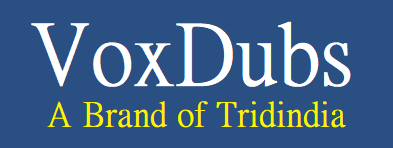In the world of film and television, where stunning visuals and compelling storytelling take center stage, there exists an often unnoticed but profoundly impactful force—the art of voice over.
Voice over, the process of adding a narrator’s voice to accompany on-screen visuals or provide commentary, is a hidden gem in the world of media production.
This seemingly invisible element plays a significant role in enhancing the overall cinematic experience, adding depth to narratives, and immersing audiences into the worlds created on screen.
Let’s unravel the significance of voice over in film and TV and explore how this unassuming aspect of production can become a powerful tool for storytelling.
1. Narrating the Unseen
Voice over acts as the bridge between the visible and the unseen. It allows filmmakers to provide context, background information, and emotional depth to scenes that might not be readily apparent through visuals alone.
Narration can be an invaluable tool in storytelling, especially when dealing with complex plots, character motivations, or historical events.
For instance, in historical dramas or documentaries, a knowledgeable and compelling narrator can guide viewers through significant events, creating a sense of immersion and understanding.
The voice over can weave together various plotlines and historical contexts, transforming a mere sequence of scenes into a cohesive and captivating narrative.
2. Eliciting Emotions and Empathy
One of the most potent aspects of voice over lies in its ability to evoke emotions and foster empathy. A skilled voice actor can infuse depth, nuance, and emotion into the narration, capturing the essence of a character’s thoughts or feelings.
This emotional connection between the narrator and the audience can influence how viewers perceive and react to the content.
Imagine a heart-wrenching voice over in a dramatic scene, bringing tears to the eyes of the audience or a passionate voice that rallies the viewers behind a cause in a documentary.
These emotional touches not only deepen the audience’s engagement but also leave a lasting impact on their memories, making the content more memorable and resonant.
3. Supporting Visual Storytelling
Voice over in film and TV is not meant to overpower the visuals; rather, it complements and enhances the storytelling.
It provides an additional layer of information, guiding the audience through the narrative without distracting from the on-screen action.
In documentaries, professional voice over often fills in the gaps between interviews and footage, offering a cohesive and informative narrative.
In nature documentaries, for instance, the narrator’s voice might describe the behavior of animals or the intricacies of ecosystems, seamlessly integrating with the stunning visuals to create an educational and captivating experience.
4. Building Atmosphere and Tension
A well-executed voice over can help establish the atmosphere and build tension in a film or TV show.
The voice actor’s tone, pacing, and delivery can set the mood, creating anticipation or suspense as the plot unfolds.
Whether it’s the foreboding voice in a horror movie or the intense narration in a thriller, the voice over can heighten the emotional impact and keep the audience on the edge of their seats.
5. Handling Unseen Elements
Voice over plays an essential role in handling elements that are not captured in the primary audio recording.
In some instances, on-set dialogue might be unclear, or a scene might require additional information not captured during filming.
Voice over provides a practical solution, allowing filmmakers to clarify dialogue or introduce new elements without re-filming the entire scene.
6. Language Localization
In today’s globalized world, language localization is crucial for reaching international audiences.
Voice over becomes a valuable asset in this regard, enabling filmmakers to adapt their content for different regions and cultures without compromising on the original visuals.
By recording the narration in multiple languages, filmmakers can break down language barriers and ensure their message reaches a wider global audience.
Conclusion
While often an unseen and unassuming aspect of media production, the significance of voice over in film and TV cannot be understated.
This invisible force has the power to add depth, emotion, and context to on-screen visuals, elevating the overall cinematic experience for audiences worldwide.
From narrating the unseen to eliciting emotions, supporting visual storytelling, and facilitating language localization, voice over remains a vital tool in the storyteller’s arsenal.
As filmmakers continue to push the boundaries of creativity and embrace the diverse tastes of their audiences, the art of voice over will undoubtedly evolve and find new ways to enhance the magic of film and television.
Whether it’s a gripping narrative in a thrilling action film or a heartwarming voice that touches the soul in a poignant drama, voice over will continue to be a force that leaves a lasting impression on the hearts and minds of viewers around the globe.
For more information contact VoxDubs at +91-8527599201 or grab an instant quote.
